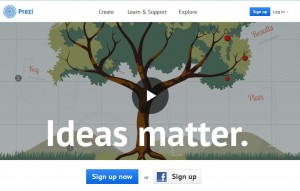We had another great session last week with Alexis Miller introducing us to great tools for Flipping the Classroom. We talked about different ideas about Flipping, easy tools to use, issues that come up and, of course, the benefits of Flipping. To listen to the session, click here. (The recording started a bit early and there are a few quiet minutes at first as things get going, you might want to fast forward to minute 55 or so).
The most common question by far was what do you do with students who don’t have access to the Internet at home. Alexis shared that she always gave about a week for students to watch the videos. She then made her classroom available during lunch and after school so that kids could watch the videos there. She also encouraged students to go to a friend or relative’s house. Finally, she worked to make sure that videos could be viewed over smart phones, since more and more students do have Internet access on phones. 
We also talked about different ways you might want to use videos. Alexis mentioned that in some of her classes, she had the kids watch during class. This allowed students to watch at their own speed and to stop the videos as often as they needed. Giving students this ability to pace themselves is a wonderful way to differentiate your instruction. Many teachers meet with small groups of students while the rest are watching the video.
We watched a video that Alexis made via TedEd to help everyone picture how these videos work. We also had lots of fun talking about how we might have students create instructional videos. Kids love creating the videos and it is a great way to find out if they’ve really mastered a concept. Students enjoy learning from each other as well, so often students express things in ways we just don’t think of! Amanda E. jumped on and shared how she used ScreenChomp in this way!
Below please find many of the tools Alexis mentioned as well as some resources for videos or more about how to flip your classroom!
Tools to make videos:
Camtasia – 30 day free trial available, very good tool for making videos, inserting web cam video, adding quiz questions
Kaltura – embedded in Blackboard for ACPS folks. Ask your TIS to learn more!
Screencast-o-matic – free, online screencast maker. Very easy to use! A great place to start.
Great apps: Screenchomp, EduCreations, ShowMe
Resources of videos:
Ted Ed – let’s you upload videos, add questions, add video hints, and track student views.
Alexis’s Ted Ed Example – see a video that Alexis made
Learn Zillion – hundreds of websites already loaded, mostly Math and Language Arts
Math Train – math instructional videos made by students
Math2Me – instructional math videos in Spanish
Resource about Flipping the Classroom:
Using Camtasia to Flip the Classroom – website that Alexis and colleagues made about Flipping
Lots of Twitter hashtags worth checking out: #flipclass, #flippedclass, #flippedlearning, #flippedtip
The Flipped Learning Network – lots of great resources, they also host a conference each year.
Final tips from Alexis:
- start small (she just made 3 videos her first year)
- keep them short (under 5 minutes is best)
- don’t mention due dates or you’ll have to make new videos each day
- plan, plan, plan – you don’t have to script out your videos, but know ahead of time what you plan to say
- have clear expectations for your students












